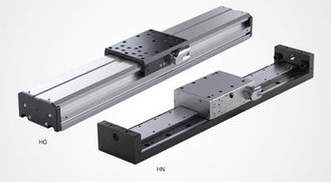| [Visitor (112.0.*.*)]answers [Chinese ] | Time :2022-05-04 |  The figure linear motor clearly shows the internal windings of the mover. Magnets and magnetic rails. The mover is made of epoxy material to press the coil. Moreover, the magnetic rail is to fix the magnet to the steel. The figure linear motor clearly shows the internal windings of the mover. Magnets and magnetic rails. The mover is made of epoxy material to press the coil. Moreover, the magnetic rail is to fix the magnet to the steel.
Linear motors are often simply described as rotating motors being flattened while working on the same principle. Mover: It is made by compressing the coils together with epoxy material; A magnetic rail is a magnet (usually a high-energy rare earth magnet) that is fixed to steel. The motor's actuator includes coil windings, Hall element circuit boards, electrothermal regulators (temperature sensors monitor temperature) and electronic interfaces. In a rotating motor, the mover and stator require a rotating bearing to support the mover to ensure an air gap in the relatively moving part. Similarly, linear motors require linear guides to maintain the position of the mover in the magnetic field generated by the magnetic rail.Just as the encoder of the rotary servo motor is installed on the shaft to feedback the position, the linear motor needs a feedback device that feedbacks the linear position - the linear encoder, which can directly measure the position of the load and improve the position accuracy of the load...
Linear motors are controlled the same as rotating motors. Like brushless rotating motors, the mover and stator have no mechanical connection (brushless), unlike the aspect of the rotating motor, the moving agent rotation and stator position remain fixed, the linear motor system can be magnetic rail movement or thrust coil movement (most positioning system applications are magnetic rail fixation, thrust coil movement). For motors that move with thrust coils, the weight-to-load ratio of the thrust coils is very small. However, highly flexible cables and their management systems are required. Motors that move with magnetic rails not only have to withstand loads, but also rail masses, but do not require a cable management system.
Similar electromechanical principles are used in linear and rotating motors. The same electromagnetic force generates a moment on a rotating motor and a linear thrust effect on the linear motor. Therefore, linear motors use the same control and programmable configuration as rotating motors. Linear motors can be in the shape of flat and U-shaped slots, as well as tubular. Which construction is best suited depends on the specifications and working environment of the application. |
|
